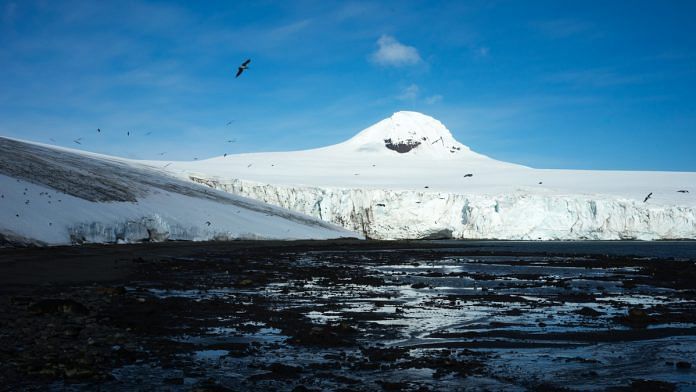On a 98-degree June day in Washington in 1988, physicist James Hansen told a U.S. Senate committee that “global warming is now large enough that we can ascribe with a high degree of confidence a cause and effect relationship to the greenhouse effect.” Hansen, at the time director of the National Aeronautics and Space Administration’s Goddard Institute for Space Studies, elaborated that “with 99% confidence we can state that the warming during this time period is a real warming trend.”
Those assertions made headlines around the world, and can be said to have started the public and political discussion over global warming (the scientific discussion was already well under way) that continues to this day. They also caught Hansen some flak from fellow climate scientists who thought he had expressed himself with more certainty than warranted. Indeed, the scientific paper on which Hansen based his testimony, which he wrote with seven co-authors and was published that August in the Journal of Geophysical Research, cautioned that it was not yet certain that the warm temperatures of the 1980s were the product of the greenhouse effect.
Still, the paper did speculate that it might become clear soon, and provided detailed forecasts (which Hansen also discussed briefly in his Senate testimony) of how much global temperatures could be expected to rise under three emissions scenarios. The annual forecasts ran through 2019, meaning that we can now judge in full how on-target they were.
As benchmarks I’ve used the global land-ocean temperature averages maintained by NASA’s Goddard Institute, where Hansen held the top job until 2013 — but also, because I know I will get emails from readers asserting that NASA can’t be trusted, those of Berkeley Earth. The latter organization was founded in 2010 by a University of California at Berkeley physicist who was somewhat dubious of the NASA data (and got a big chunk of its early funding from the Charles Koch Charitable Foundation, which has a history of backing climate-change skeptics). As you can see below, its temperature estimates, while lower than NASA’s, aren’t much lower.
Also read: Climate change doesn’t just cost us the environment, but a pretty penny too
Scenario A, which assumed that the greenhouse-gas emissions-growth rates of the 1970s and 1980s would “continue indefinitely,” turns out to have been way off on the high side. Scenario C, which envisioned “draconian emission cuts,” is way off on the low side. But Scenario B, in which greenhouse-gas emissions-growth rates slowed “such that the annual increase of the greenhouse climate forcing remains approximately constant at the present level” is definitely in the ballpark.
In 1988, Hansen and his co-authors termed Scenario B “perhaps the most plausible of the three cases,” so it does seem like the fairest one to judge them by. Scenario B turns out to have quite accurately predicted the rise in atmospheric carbon dioxide through 2019. Its temperature forecast nonetheless came out a little high because it overestimated the atmospheric concentrations of methane — which have proved extremely hard to predict — and of chlorofluorocarbons, which began to level off and then decline more quickly than pretty much anyone expected after the 1987 Montreal Protocol on Substances that Deplete the Ozone Layer.
Correct for that, as Zeke Hausfather of UC Berkeley, the Breakthrough Institute and Berkeley Earth and his three co-authors did in a paper published in Geophysical Research Letters last month, and “the results are consistent with the observations.” That is, the model used by Hansen and his co-authors in 1988 did a good job of predicting how much warming would be caused by increased concentrations of greenhouse gases, it just failed to predict with perfect accuracy what those concentrations would be. Hausfather and his co-authors made similar corrections to 15 other detailed warming forecasts made from 1970 through 2007 and found that all but three had proved “skillful” in extrapolating temperature changes from greenhouse-gas concentrations. As Gavin Schmidt, Hansen’s successor at the Goddard Institute and one of Hausfather’s co-authors, put it in a blog post summarizing the results: “Gosh, maybe we know something about climate after all!”
It should be noted that seven or eight years ago, after global average temperatures had barely risen for a decade, these warming forecasts weren’t looking quite so accurate. “People were thinking, ‘Something’s going on,’” Schmidt recalled when I paid him a visit this week, with climate scientists trotting out alternative explanations ranging from decadal ocean variability to tiny particles (aka aerosols) in the atmosphere to problems with the temperature record. “Then you have the three warmest years on record in a row, and everybody stops talking about it because it’s stupid.”
I happen to really dislike it when people use the phrase “the science is settled” in reference to climate change. Science, if it’s actually science, should never be entirely settled. Researchers seem to be very much in the early stages of figuring out how to predict greenhouse-gas-induced changes in the climate beyond just increases in global average temperatures — and some of those changes may simply not be predictable. But it’s now been 124 years since Swedish physicist Svante Arrhenius hypothesized that higher atmospheric carbon-dioxide concentrations would bring higher global temperatures, and 50 years since scientists began building detailed climate models around that notion. When James Hansen said in 1988 that he was virtually certain that humans were warming the earth’s climate “he went out on a limb,” Schmidt says now. That limb, however, has yet to break. – Bloomberg
Also read: It took 50 years for climate change to top the Davos agenda






